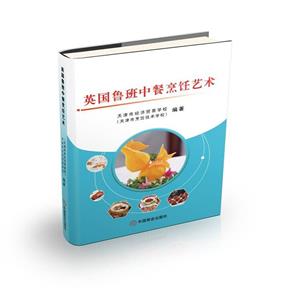Forward
Introduction to Lu Ban Workshop Project in the UK
Part One: Chinese Food Culture
Chapter 1 The Evolution of Chinese Food Culture
Section 1 The Budding Period
1.1 The Development of Food Culture During the Budding Period
1.2 The Characteristics of the Budding Period
Section 2 The Formation Period
2.1 Further Development of Agriculture Broadened Food Sources
2.2 Specialised Craftsmanship Allowed Culinary Tools to Upgrade Constantly
2.3 Innovation in Culinary Techniques Led to the Creation of a Greater Variety of Cuisine
2.4 Initial Form of Banquets and Food Market Started to Emerge
Section 3 The Development Period
3.1 Food Sources Continued to Increase
3.2 New Breakthroughs in Energy Sources, Cooking Utensils, and Tableware
3.3 Constant Innovation in Culinary Skills
3.4 The Popularity of Banquets and Food Markets
3.5 The Improvement in Chinese Dietary Theory
Section 4 The Maturation Period
4.1 Extensive Food Sources
4.2 Exquisite Tableware
4.3 A Relatively Complete System of Culinary Skills
4.4 The Emergence of Regional Cuisines
4.5 The Establishment of a Complete Banquet Culture
Section 5 The Contemporary Period
5.1 Advanced Kitchen Appliances
5.2 Industrialisation of Food Production
5.3 Food Sources Continue to Grow
5.4 Exchange of Culinary Resources Nationally and Globally
5.5 The Trend of Chinese Food Development
Chapter 2 The Characteristics of Chinese Food Culture
Section 1 Characteristics of Chinese Food Culture
1.1 A Wide Range of Cooking Ingredients and Superb Culinary Skills
1.2 A Wide Range of Cuisine Styles
1.3 A Manifestation of Chinese Culture
1.4 Combined Effect of Food and Medicine for Yangsheng (Nourishing Life)
Section 2 The Guiding ldeology of Chinese Traditional Diet
2.1 Contents and Embodiment
2.2 The Development of Food Science in Modern China
Section 3 Traditional Chinese Diet Composition
3.1 Traditional Chinese Diet Composition
3.2 The Validation and Limitation of Chinese Traditional Diet Composition
Chapter 3 The Classification of Chinese Cuisine
Section 1 The Classification of Chinese Cuisine from a Historical Perspective
1.1 Folk Cuisine
1.2 Imperial Court Cuisine
1.3 Scholar-officials Family Cuisine
1.4 Temple Cuisine
1.5 Ethnic Cuisine
1.6 Marketplace Cuisine
Section 2 Schools of Chinese Cuisine
2.1 Sichuan Cuisine
2.2 Shandong Cuisine
2.3 Jiangsu Cuisine
2.4 Guangdong Cuisine
2.5 Beijing Cuisine
Chapter 4 Chinese Food Related Folk Customs and Etiquettes
Section 1 Daily Food Customs
1.1 Key Features of Chinese Daily Food Customs
1.2 Daily Food Customs of Han Chinese
Section 2 Food Related Folk Customs in Festivals
……
Part Two: Ingredients & Equipment.
Part Three: Chinese Culinary Techniques





















